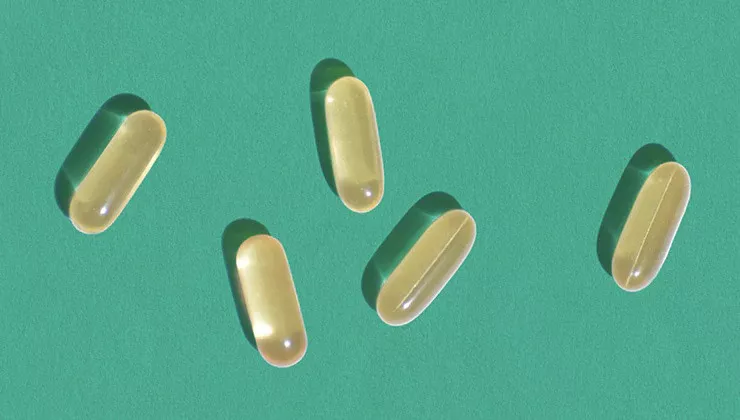Scars, whether from surgeries, injuries, or skin conditions, often prompt individuals to seek solutions that can improve their appearance and texture. In the realm of scar management, liquid vitamin E has gained popularity as a potential remedy. This comprehensive guide explores the question: Does liquid vitamin E help scars? From understanding the properties of liquid vitamin E to exploring its application in scar treatment, we navigate the multifaceted landscape of skincare to provide insights for those seeking to harness the potential benefits of this vitamin in their scar management journey.
Understanding the Role of Vitamin E in Skin Health
Vitamin E
Vitamin E is a fat-soluble antioxidant that plays a crucial role in maintaining skin health. It exists in several forms, with alpha-tocopherol being the most biologically active. Known for its ability to neutralize free radicals, vitamin E contributes to protecting cells from oxidative damage. While vitamin E is naturally present in certain foods, supplements, including liquid formulations, have become popular for those looking to enhance their intake for various health reasons, including skin benefits.
Antioxidant Properties
One of the primary roles of vitamin E is its function as an antioxidant. Antioxidants work by neutralizing free radicals, which are unstable molecules that can damage cells. In the context of skin health, the antioxidant properties of vitamin E are believed to contribute to protecting the skin from oxidative stress caused by factors such as UV radiation, pollution, and inflammation. By reducing oxidative damage, vitamin E supports overall skin integrity.
Liquid Vitamin E and Scar Treatment: The Mechanism of Action
Moisturization and Hydration
Liquid vitamin E is often promoted for its moisturizing properties. When applied topically, it can help hydrate the skin, potentially improving the overall appearance and texture of scars. Proper hydration is a fundamental aspect of scar management, as it contributes to the suppleness and elasticity of the skin. By maintaining adequate moisture levels, liquid vitamin E may play a role in preventing scars from becoming overly dry and rigid.
Promoting Collagen Synthesis
Collagen is a crucial protein that provides structural support to the skin. Vitamin E is believed to influence collagen synthesis, which is vital for the healing and remodeling of skin tissue. In the context of scars, promoting collagen production can contribute to a more organized and uniform arrangement of collagen fibers, potentially leading to improved scar texture. Liquid vitamin E, when applied to scars, is thought to facilitate this collagen-building process.
Research Insights: What Studies Say About Vitamin E and Scars
Limited Scientific Evidence
While the idea of using vitamin E for scar treatment is widely discussed, the scientific evidence supporting its efficacy is somewhat limited and mixed. Some studies have suggested that vitamin E may be beneficial in preventing hypertrophic scars and keloids, while others have found no significant improvement compared to a placebo. The variable outcomes in research highlight the need for more extensive and rigorous studies to establish a clearer understanding of the relationship between liquid vitamin E and scar management.
Potential for Irritation
It’s important to note that while vitamin E is generally considered safe, there is a potential for irritation, especially in individuals with sensitive skin. Some studies have reported cases of contact dermatitis and other adverse reactions associated with the topical application of vitamin E. Understanding individual skin sensitivities and conducting patch tests before widespread application is advisable.
How to Use Liquid Vitamin E for Scars: Best Practices
Topical Application
For those considering the use of liquid vitamin E for scar management, topical application is the most common method. Applying a small amount of liquid vitamin E directly to the scar allows for localized treatment. Gently massaging the vitamin E into the scar may help enhance absorption and promote circulation in the area. It’s recommended to perform a patch test on a small area of skin before regular application to assess for any potential adverse reactions.
Combination with Other Ingredients
Some individuals opt to combine liquid vitamin E with other skincare ingredients to create customized formulations. Common additions include aloe vera, rosehip seed oil, or other natural oils known for their skincare benefits. The synergy of these ingredients is thought to enhance the overall effectiveness of the topical treatment. However, it’s essential to be cautious with ingredient combinations, as certain combinations may lead to skin irritation.
Potential Benefits and Drawbacks of Liquid Vitamin E for Scars
Potential Benefits:
Moisturization: The hydrating properties of liquid vitamin E can contribute to maintaining proper moisture levels in the skin, preventing excessive dryness in scar tissue.
Antioxidant Protection: As an antioxidant, vitamin E may help protect the skin from oxidative stress, supporting overall skin health during the healing process.
Collagen Synthesis: The potential role of vitamin E in promoting collagen synthesis could contribute to improved scar texture and appearance.
Drawbacks and Considerations:
Limited Scientific Evidence: The lack of robust scientific evidence makes it challenging to definitively establish the efficacy of liquid vitamin E for scar treatment.
Potential for Irritation: Some individuals may experience skin irritation or allergic reactions to topical vitamin E. Patch testing is recommended.
Individual Variability: Responses to liquid vitamin E can vary among individuals, and what works for one person may not yield the same results for another.
Alternatives and Complementary Approaches in Scar Management
Silicone-based Products
Silicone-based products, such as gels or sheets, are widely recognized in scar management. They create a protective barrier over the scar, maintaining moisture and modulating collagen production. Silicone products have demonstrated efficacy in improving the appearance of scars and are often considered a first-line treatment.
Laser Therapy
Laser therapy is a medical intervention that can address various aspects of scar appearance, including color, texture, and thickness. By targeting specific components of scar tissue, laser therapy promotes collagen remodeling and helps create a smoother skin surface. Laser treatments are typically performed by dermatologists or qualified skincare professionals.
Corticosteroid Injections
For hypertrophic scars and keloids, corticosteroid injections are a common intervention. These injections work by reducing inflammation and suppressing the immune response, leading to a softening and flattening of the scar. Corticosteroid injections are administered by healthcare professionals and may require multiple sessions.
Conclusion
In conclusion, the question of whether liquid vitamin E helps scars remains a topic of interest and exploration. While the antioxidant properties, moisturizing effects, and potential influence on collagen synthesis suggest that liquid vitamin E could play a role in scar management, the scientific evidence supporting its efficacy is not conclusive.
Individuals considering the use of liquid vitamin E for scars should approach it with a nuanced understanding, considering the potential benefits, drawbacks, and individual variability in responses. Patch testing and consultation with dermatologists or skincare professionals can provide personalized insights into the suitability of liquid vitamin E for specific skin types and scar characteristics.
Navigating the landscape of scar management involves exploring a range of options, from established interventions like silicone-based products and laser therapy to emerging possibilities such as liquid vitamin E. As research continues to unfold and our understanding of skincare deepens, individuals can make informed decisions in their quest for optimal scar improvement and skin health
[inline_related_posts title=”You Might Be Interested In” title_align=”left” style=”list” number=”6″ align=”none” ids=”3542,3540,3538″ by=”categories” orderby=”rand” order=”DESC” hide_thumb=”no” thumb_right=”no” views=”no” date=”yes” grid_columns=”2″ post_type=”” tax=””]

































